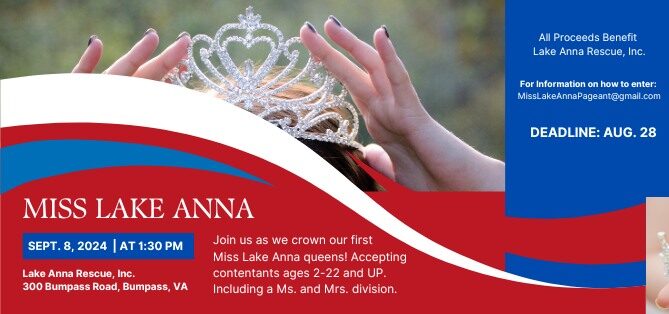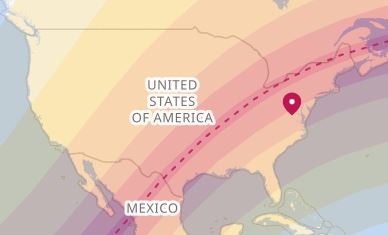
April 8, 2024 will be a once in a lifetime event for many people in the USA. A total Solar Eclipse will shroud parts of the county in the shadow of the Moon. The massive shadow, called the Umbra, will be about 100 miles wide. Those under the path of the Umbra will experience several minutes of twilight, during totality, but it won’t become totally dark.
Areas further away from the Umbra will still experience some decrease in light under the Penumbra. The Penumbra will extend from Northern Canada to almost South American.

(Dotted Line is the center of the Solar Eclipse path)
Virginia will be well within the Penumbra, with the Lake Anna area experiencing a partial eclipse max of around 86% reduction around 3:18 pm. The partial eclipse for this area will last for almost 3 hours. It will start around 2pm and last until around 4:30pm. Although we will lose much of the sunlight IT IS NOT SAFE TO LOOK AT THE SUN DURING THIS TIME. Solar eclipse glasses are required, in order to view the partial eclipse, without damaging your eyes. Also, taking photos of the eclipse will be impossible without a special solar lens cover for your camera.
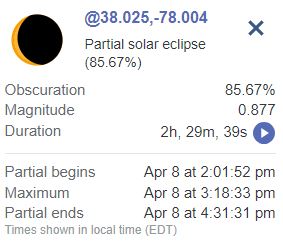
(Lake Anna Partial Solar Eclipse Times)
The loss of solar radiation, under the Umbra causes some unique effects. Temperatures will fall, cumulus clouds will fade away, and winds will become weaker. All due to the loss of solar heating. Solar panels will emit much lower electricity and animals have been known to start their normal nighttime routines, but that quickly is stopped as the sun comes back out from behind the Moon.
The big question is: Will there be too many clouds overhead to block any view of the eclipse? At this time, we seem to be in good favor with Mother Nature. High pressure is forecast over the region that will allow for excellent viewing conditions. Keep your eye on the forecasts for the Lake Anna area on Facebook at Lake Anna Weather, LLC.

I grew up an Air Force Brat. Traveled the country and lived in Georgia, Maine, New York, Hawaii and Oklahoma.
I fell in love with the weather in Oklahoma. My father was transferred to Tinker AFB in 1973. While in Temporary housing (a mobile home, which is the standard in Oklahoma) I experienced my first severe thunderstorm with strong winds and hail the size of baseballs. The next day I was in the base library looking up books on weather. The rest is history.
I graduated from the University of Oklahoma in 1983 with a Bachelor’s Degree in Meteorology. The first two years we took Calculus, Differential equations, Physics, Chemistry and Computer science classes with the Engineering Students. It was a grind. My degree is actually from the College of Engineering. The last 2-3 year’s focus was on Meteorology including Observational networks (Satellite, Radar, Surface), Physics, Thermodynamics, Dynamics, Synoptic, Winter Weather, Severe Weather and Climatology.
My first job out of college was with a small forecasting company in Oklahoma City. I was immediately put on TV (OETA) and Radio (WKY) as their broadcast Meteorologist. After two years in broadcasting, I decided to pursue the National Weather Service route and got a position in Toledo, OH as an intern. After a couple of years, I was promoted to a forecaster position at the Cleveland Forecast office. I quickly moved into the Weather Preparedness position and was responsible for all the preparedness activities in the state of Ohio.
In 1992 I decided to pursue other forecast opportunities and moved to the Meteorological Operations Division of the National Meteorological Center in Washington, DC. This group is now called WPC (Weather Prediction Center). There I fine-tuned my forecasting of Synoptic Weather with my focus on Heavy Convective Rainfall and Winter Storms, under the supervision of Dr. Louis Uccellini. He has written several books on East Coast Winter storms. I was promoted to a Senior Branch Forecast position during my tenure at MOD. Part of my job was to teach weather classes at COMET (Cooperative Program for Operational Meteorology, Education, and Training).
In 2012 I was given the opportunity to start up a new weather support group with the FAA (Federal Aviation Administration) in Warrenton, VA at the ATCSSC (Air Traffic Control System Command Center). The ATCSCC is where the FAA identifies solutions to air traffic inefficiencies in the NAS (National Air Space) for the CONUS (Continental United State). Weather impacts are the biggest impact on Aviation with yearly losses over 20 billion dollars. My job was to help lower these inefficiencies/costs by providing weather impact briefings and forecasts in order to keep the air planes moving as safely and efficiently as possible.
I retired in 2022 and now am running Lake Anna Weather, LLC.
Subscribe for Updates
Sponsors
latest articles
Lake Anna Barbell Fitness Center Breaks Ground at Roundabout Plaza
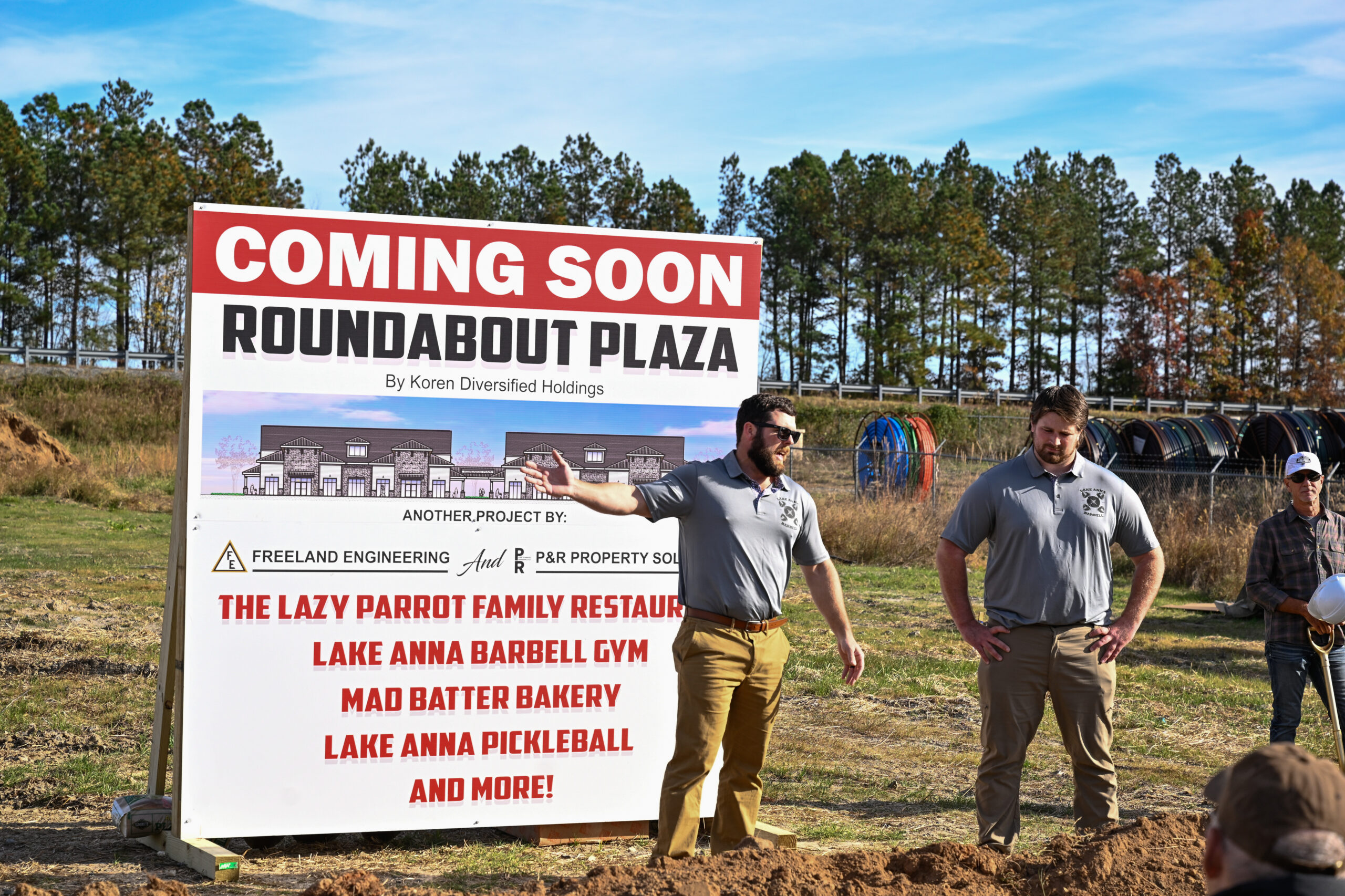
A Social Club with a Charity Problem: Lake Anna Roosters & Foxes Raise Big for Local Needs

“No One Leaves Here Hungry”: The Louisa County Resource Council Impacts Thousands of Locals in Need
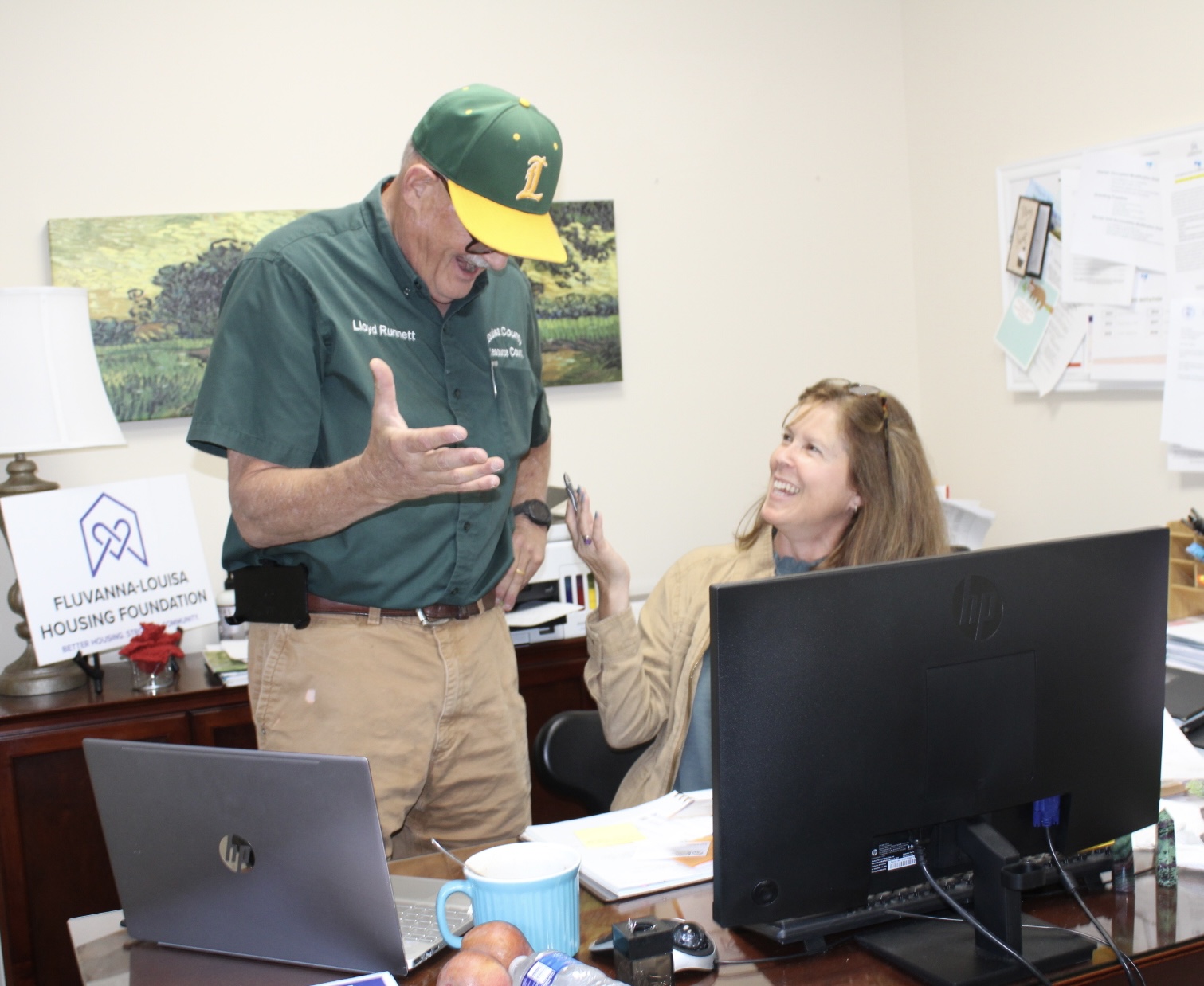
Remembering “DJ Mike”

Winter Weather Forecast: What to Expect this Season

Beau’s Perspective: The White Stuff

April 8, 2024 will be a once in a lifetime event for many people in the USA. A total Solar Eclipse will shroud parts of the county in the shadow of the Moon. The massive shadow, called the Umbra, will be about 100 miles wide. Those under the path of the Umbra will experience several minutes of twilight, during totality, but it won’t become totally dark.
Areas further away from the Umbra will still experience some decrease in light under the Penumbra. The Penumbra will extend from Northern Canada to almost South American.

(Dotted Line is the center of the Solar Eclipse path)
Virginia will be well within the Penumbra, with the Lake Anna area experiencing a partial eclipse max of around 86% reduction around 3:18 pm. The partial eclipse for this area will last for almost 3 hours. It will start around 2pm and last until around 4:30pm. Although we will lose much of the sunlight IT IS NOT SAFE TO LOOK AT THE SUN DURING THIS TIME. Solar eclipse glasses are required, in order to view the partial eclipse, without damaging your eyes. Also, taking photos of the eclipse will be impossible without a special solar lens cover for your camera.

(Lake Anna Partial Solar Eclipse Times)
The loss of solar radiation, under the Umbra causes some unique effects. Temperatures will fall, cumulus clouds will fade away, and winds will become weaker. All due to the loss of solar heating. Solar panels will emit much lower electricity and animals have been known to start their normal nighttime routines, but that quickly is stopped as the sun comes back out from behind the Moon.
The big question is: Will there be too many clouds overhead to block any view of the eclipse? At this time, we seem to be in good favor with Mother Nature. High pressure is forecast over the region that will allow for excellent viewing conditions. Keep your eye on the forecasts for the Lake Anna area on Facebook at Lake Anna Weather, LLC.

I grew up an Air Force Brat. Traveled the country and lived in Georgia, Maine, New York, Hawaii and Oklahoma.
I fell in love with the weather in Oklahoma. My father was transferred to Tinker AFB in 1973. While in Temporary housing (a mobile home, which is the standard in Oklahoma) I experienced my first severe thunderstorm with strong winds and hail the size of baseballs. The next day I was in the base library looking up books on weather. The rest is history.
I graduated from the University of Oklahoma in 1983 with a Bachelor’s Degree in Meteorology. The first two years we took Calculus, Differential equations, Physics, Chemistry and Computer science classes with the Engineering Students. It was a grind. My degree is actually from the College of Engineering. The last 2-3 year’s focus was on Meteorology including Observational networks (Satellite, Radar, Surface), Physics, Thermodynamics, Dynamics, Synoptic, Winter Weather, Severe Weather and Climatology.
My first job out of college was with a small forecasting company in Oklahoma City. I was immediately put on TV (OETA) and Radio (WKY) as their broadcast Meteorologist. After two years in broadcasting, I decided to pursue the National Weather Service route and got a position in Toledo, OH as an intern. After a couple of years, I was promoted to a forecaster position at the Cleveland Forecast office. I quickly moved into the Weather Preparedness position and was responsible for all the preparedness activities in the state of Ohio.
In 1992 I decided to pursue other forecast opportunities and moved to the Meteorological Operations Division of the National Meteorological Center in Washington, DC. This group is now called WPC (Weather Prediction Center). There I fine-tuned my forecasting of Synoptic Weather with my focus on Heavy Convective Rainfall and Winter Storms, under the supervision of Dr. Louis Uccellini. He has written several books on East Coast Winter storms. I was promoted to a Senior Branch Forecast position during my tenure at MOD. Part of my job was to teach weather classes at COMET (Cooperative Program for Operational Meteorology, Education, and Training).
In 2012 I was given the opportunity to start up a new weather support group with the FAA (Federal Aviation Administration) in Warrenton, VA at the ATCSSC (Air Traffic Control System Command Center). The ATCSCC is where the FAA identifies solutions to air traffic inefficiencies in the NAS (National Air Space) for the CONUS (Continental United State). Weather impacts are the biggest impact on Aviation with yearly losses over 20 billion dollars. My job was to help lower these inefficiencies/costs by providing weather impact briefings and forecasts in order to keep the air planes moving as safely and efficiently as possible.
I retired in 2022 and now am running Lake Anna Weather, LLC.
Subscribe for Updates
Sponsors
latest articles
Lake Anna Barbell Fitness Center Breaks Ground at Roundabout Plaza

A Social Club with a Charity Problem: Lake Anna Roosters & Foxes Raise Big for Local Needs

“No One Leaves Here Hungry”: The Louisa County Resource Council Impacts Thousands of Locals in Need

Remembering “DJ Mike”

Winter Weather Forecast: What to Expect this Season

Beau’s Perspective: The White Stuff

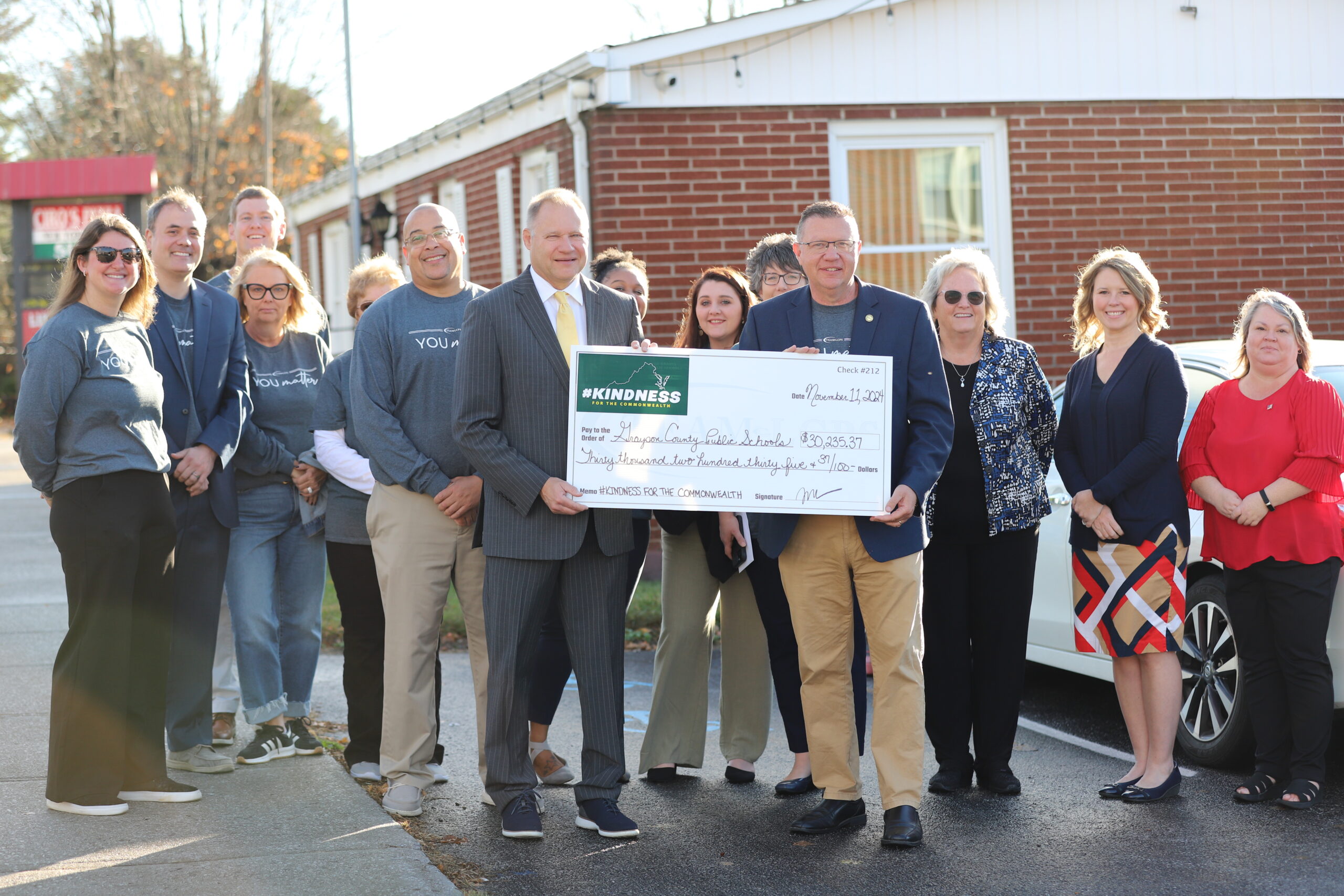
Louisa Schools Deliver $30,000 Donation to Support Grayson County’s Hurricane Recovery
Article By Jen Bailey
Louisa Chamber highlights volunteer standouts
Article By Jen Bailey
